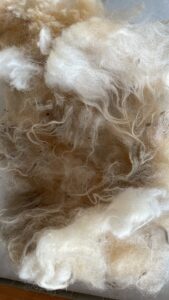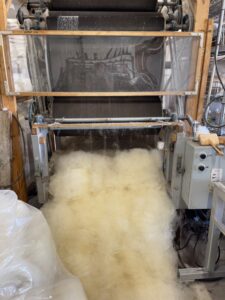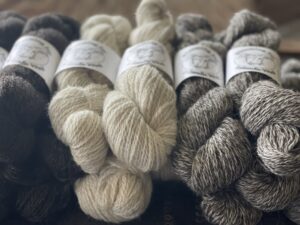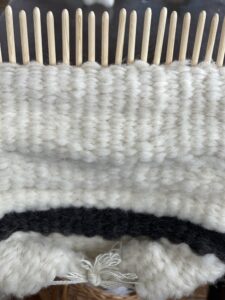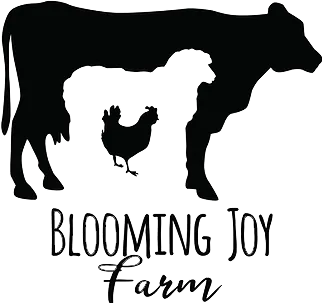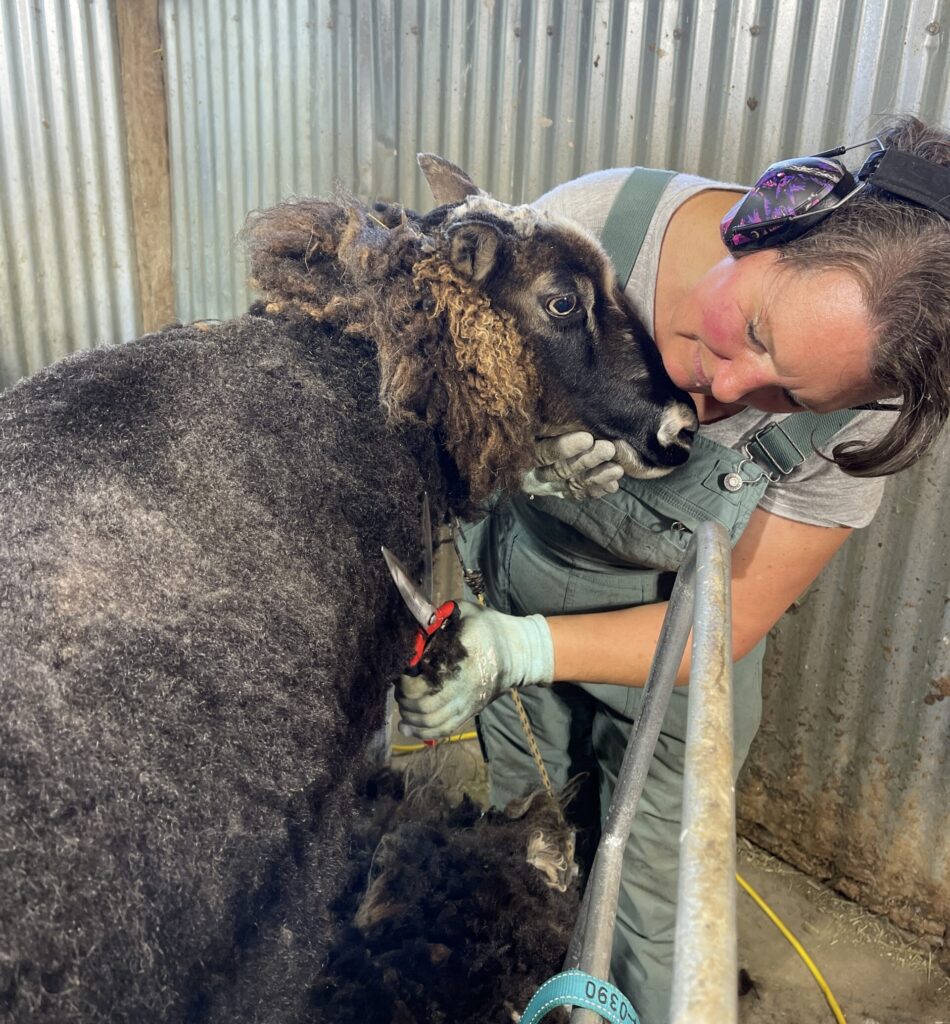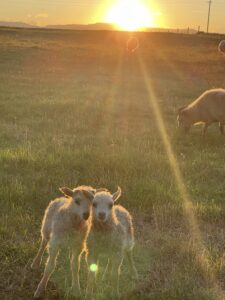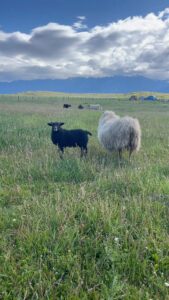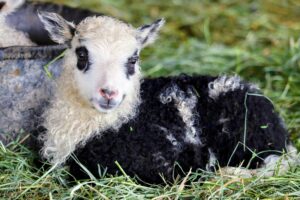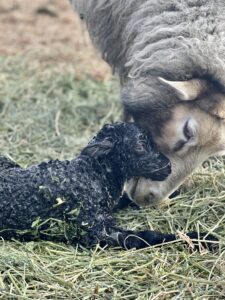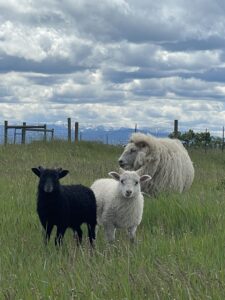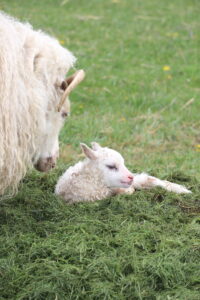Each spring, I shear the wool from our Icelandic sheep — one of the most hands-on and satisfying parts of shepherding. It marks the end of winter, the beginning of new growth, and starts the process that turns raw fleece into something useful and beautiful. In this post, I want to share what makes Icelandic wool unique, how we care for our flock to support healthy fleece, and what goes into turning that wool into yarn or roving.
The Unique Wool of Icelandic Sheep
One of the reasons I chose to raise Icelandic sheep is their dual-coated fleece — a feature that sets them apart from most modern breeds. Their wool has two distinct layers:
- Tog – the long, coarse outer coat. It’s strong, water-resistant, and adds durability to finished products.
- Thel – the soft, fluffy undercoat. It provides warmth and softness, ideal for garments worn close to the skin.
These layers can be processed together or separated, depending on the desired end product. When combined, they create a lofty yarn that’s warm, breathable, and strong — perfectly suited for our cold Montana winters.
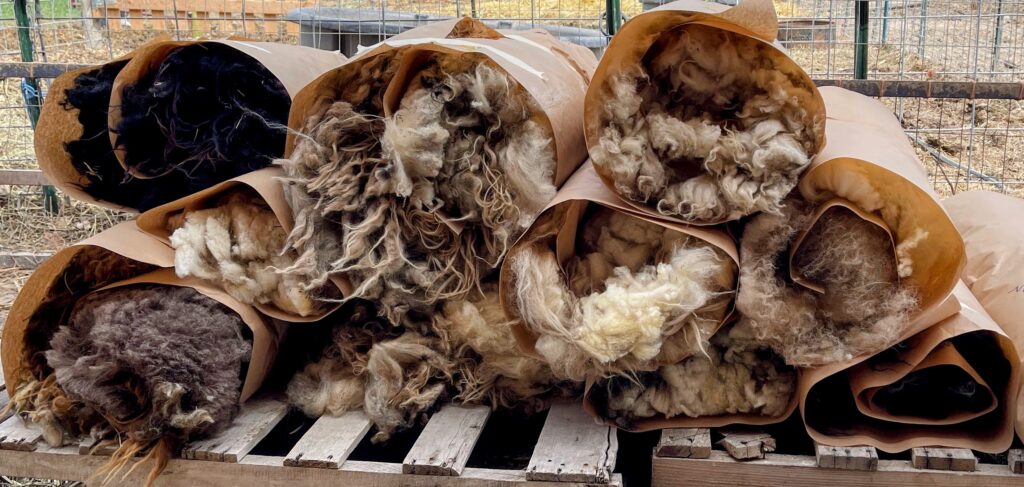
Health from the Inside Out
One of the biggest lessons I’ve learned over the years is that healthy sheep produce better fleece. We offer free-choice minerals and kelp to our flock year-round, and it shows in the wool. When the sheep have what they need nutritionally, their wool grows in fuller, stronger, and shinier.
As sheep age, the outer coat (tog) doesn’t grow quite as long, so the wool may not be ideal for spinning into yarn. But that doesn’t mean it goes unused. It just lends itself to different applications, like felting or rug yarn. The key is learning how to work with what each fleece offers.
Learning to Shear My Own Sheep
For many years, we hired a professional shearer. I was always amazed by the precision, speed, and strength they brought to the job. But about three years ago, I decided to learn the skill myself. I knew that to become a more well-rounded shepherdess, I needed to understand the wool from the moment it left the sheep.
Now, I’ve been shearing my own sheep each spring. I’m not fast, but I’m steady — and it’s become something I genuinely look forward to. It’s physical work, yes, but also peaceful and deeply connecting. Shearing helps me check in with each sheep up close, and it gives me a fuller sense of the rhythm of the season.
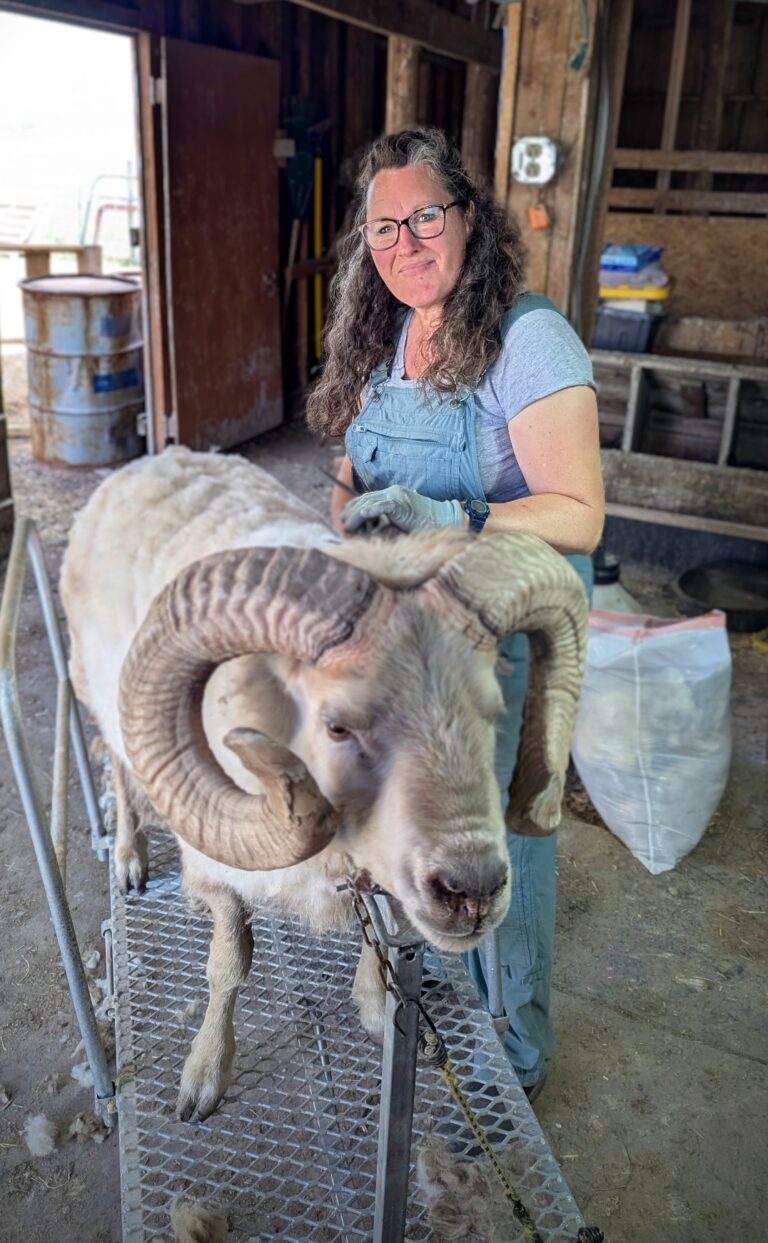
Skirting and Sorting the Wool
After shearing, the next step is skirting the fleece — laying it out and removing heavily soiled or matted sections, along with any hay or debris. I try to preserve the best parts of the fleece and sort everything by color and quality.
Once sorted, I bundle the fleeces to take them to one of two Montana-based wool mills. We’re fortunate to live within a few hours of artisan mills that wash, dry, and card the wool. Some of our fleece is spun into fine yarn, while other batches become rug yarn or roving. Each sheep gives about 4–6 pounds of wool per shearing — a generous harvest.
Roving, Felting, Rug Yarn — and Mulch: Using Every Bit
Not all wool ends up as yarn, and that’s part of what I love about working with fiber. Roving—carded, unspun wool—is ideal for felting, hand spinning or weaving. It’s especially great for working with shorter staple lengths or wool from older sheep.
I often use wet felting or needle felting techniques for creating multipurpose pieces, and I love encouraging others to try it too!
Then there’s rug yarn, which is thicker and more durable, ideal for weaving or creating sturdy home goods. When the fleece has a higher ratio of tog, rug yarn is a perfect match.
And finally, the wool that’s too dirty, too short, or too matted to process doesn’t go to waste. I use it as mulch in our garden beds and flower pots. It helps retain moisture during the warm summer days and, as it breaks down, it releases nitrogen into the soil, improving growing conditions naturally.
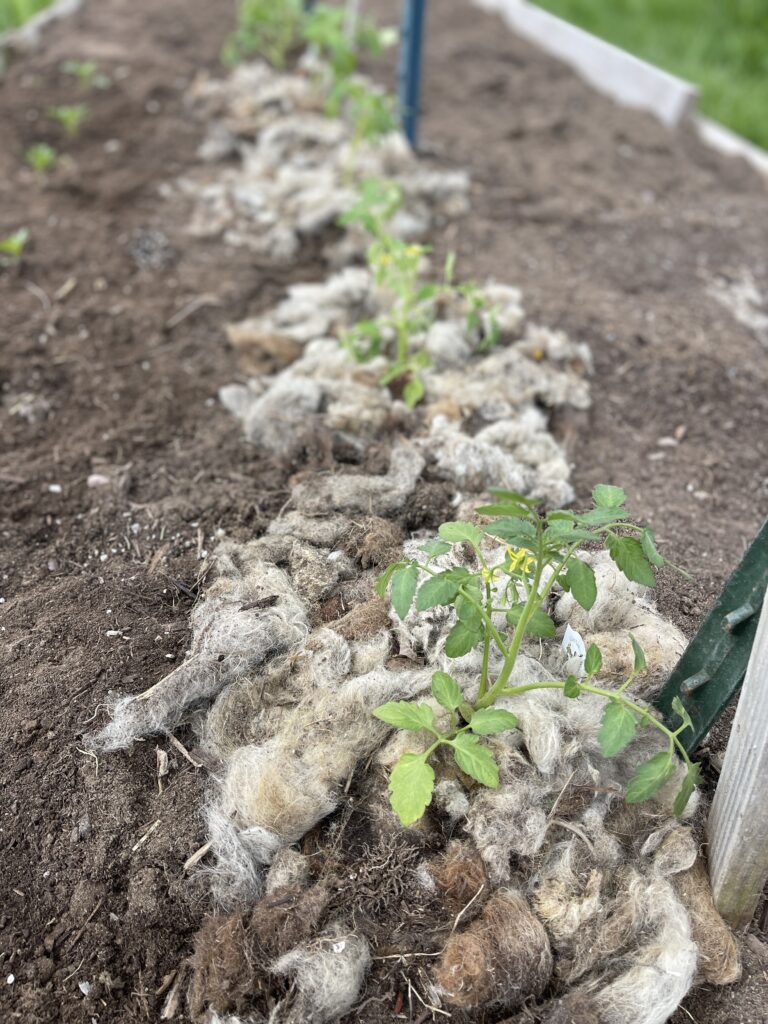
A Cycle Worth Honoring
Working with wool reminds me every year how connected everything is on the farm — the health of the soil, the well-being of the sheep, and the quality of what we make all feed into each other.
From the moment I pick up the shears in spring to the day I hold a finished skein of yarn in my hands, it’s a process I’m proud of. There’s beauty in the effort, usefulness in every part of the fleece, and a sense of tradition that grounds me in this work.
Whether you’re a fiber lover, a fellow homesteader, or just curious about the process, I hope this gave you a peek into why Icelandic sheep and their wool hold such a special place here at Blooming Joy Farm.
